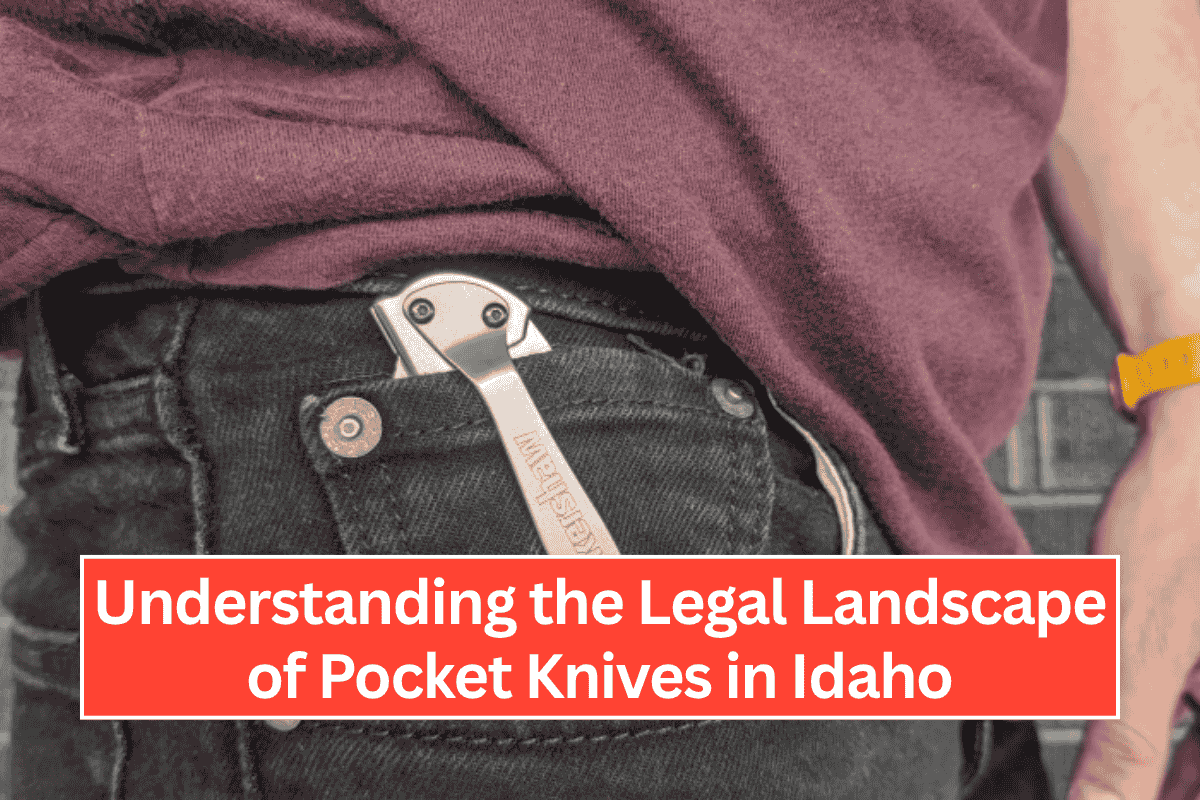If you carry a pocket knife or plan to buy one in Idaho, it’s important to understand the laws. Knowing what’s allowed and what isn’t can help you stay safe and avoid legal trouble. Many people don’t realize that knife laws are different from state to state. That’s why it’s a good idea to know the rules where you live or travel.
This article explains the basics of Idaho’s knife laws in simple terms, including the types of knives, federal rules, and where you can or can’t carry them.
Types of Pocket Knives and Blade Shapes
Not all pocket knives are the same. They come in different styles for different uses. Here are some common types:
Folding Knives: These knives fold into the handle and are easy to carry. Most pocket knives are folding knives.
Fixed Blade Knives: These don’t fold and are stronger, often used for camping or hunting.
Multi-Tool Knives: These include extra tools like screwdrivers, bottle openers, and pliers, along with a knife blade.
Pocket knife blades also have different shapes:
Drop Point: Strong and useful for many tasks.
Clip Point: Good for detailed cutting, with a sharper tip.
Tanto: Has a strong, angled point—popular for tactical or self-defense uses.
What the Law Says About Pocket Knives in Idaho
In Idaho, knife laws are fairly relaxed compared to some other states.
You can legally own and carry any kind of knife in Idaho. There are no bans on specific knife types. You’re allowed to openly carry knives of any size without a permit.
However, if you want to carry a knife in a concealed way—like inside your pocket or under your clothes—there are some rules:
If the blade is less than 4 inches, you can carry it concealed without a permit.
If the blade is longer than 4 inches, or if it’s a dagger, dirk, or Bowie knife, you’ll need a concealed weapons permit.
Federal Knife Laws You Should Know
Besides state laws, there are also some federal rules that apply across the U.S.
Switchblade Act (1958): This law bans the making, selling, or shipping of automatic knives (like switchblades) across state lines. But it does not stop you from owning one in states where it’s legal.
TSA Rules (for Flights): You can’t bring most pocket knives in your carry-on bag on a plane. Only small, non-locking knives under 2.36 inches may be allowed. It’s safer to pack knives in your checked luggage.
Federal Property Rules: On government property like courthouses or federal buildings, pocket knives are usually banned. If you’re not sure, check the rules before you visit.
Where You Can’t Carry a Pocket Knife
Even if your knife is legal, there are some places where you still can’t carry it:
Schools and universities
Airports (especially past security)
Government buildings
Amusement parks or stadiums (depending on local rules)
Always check the rules of any location you visit, especially when traveling to another state or country.
Final Tips for Knife Safety and Legal Use
Keep your knife clean and in good condition
Use your knife only for legal purposes (like camping, opening boxes, etc.)
If you’re unsure about a rule, check with local police or your state’s website
Carrying a knife responsibly shows that you respect the law and public safety












